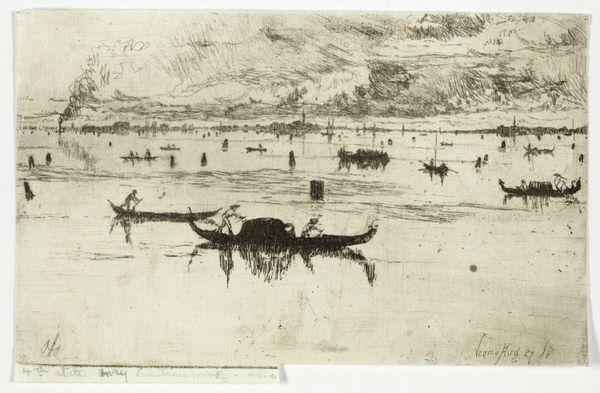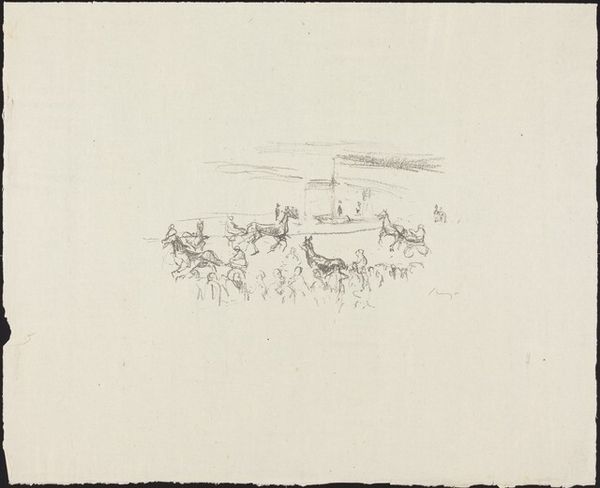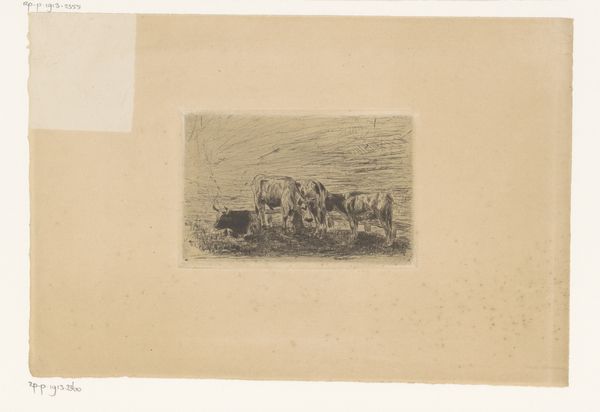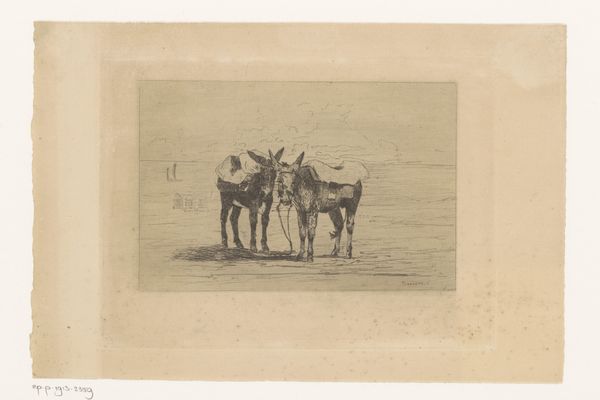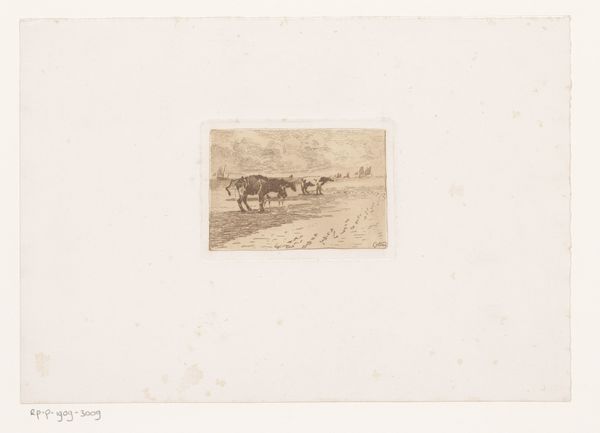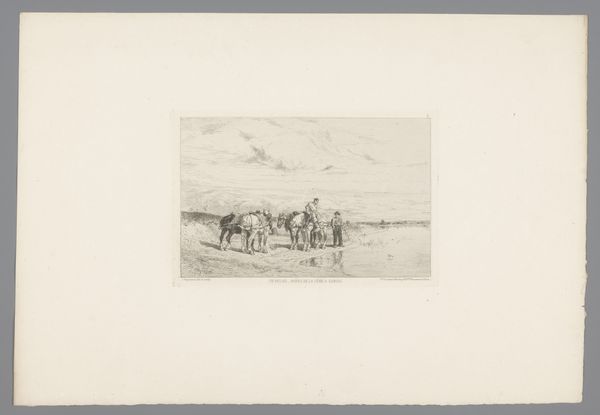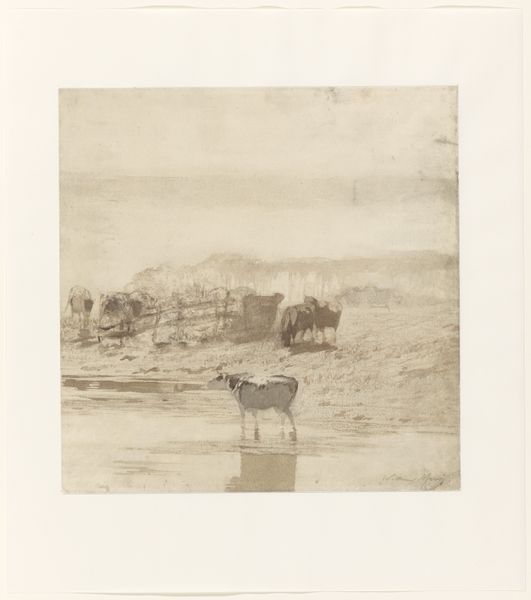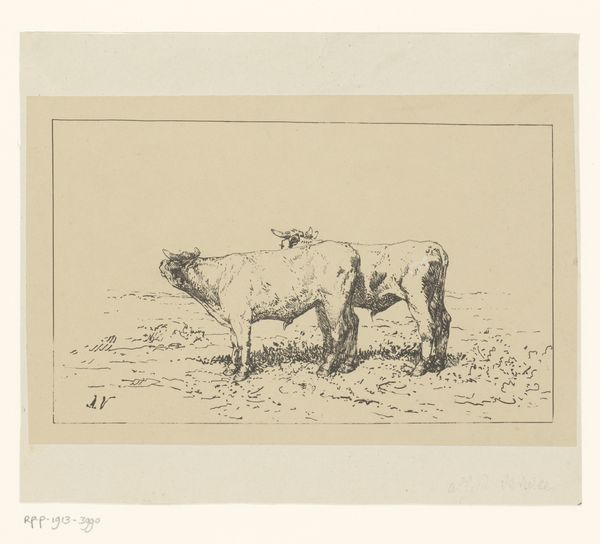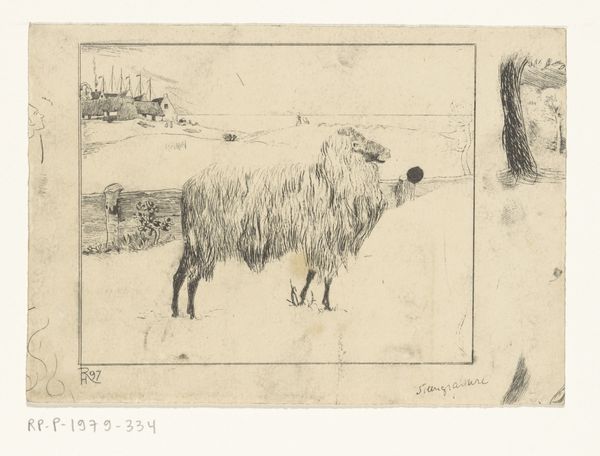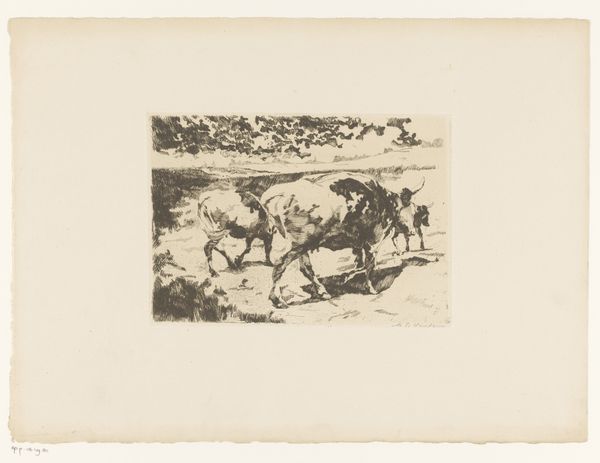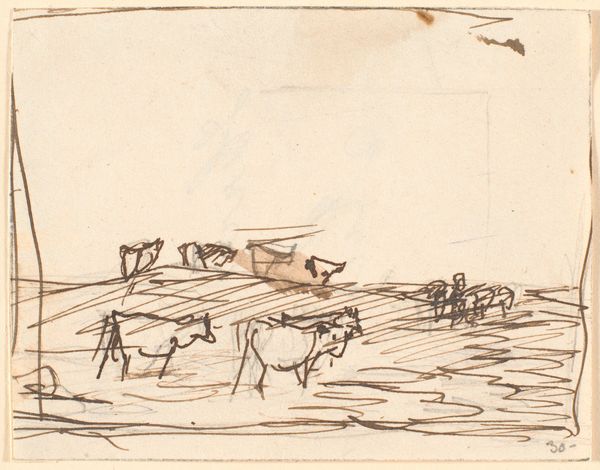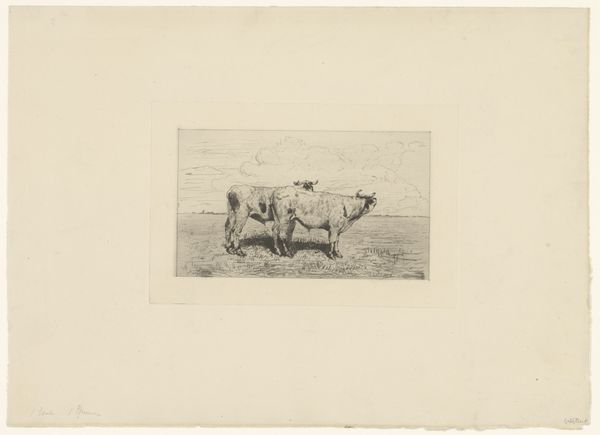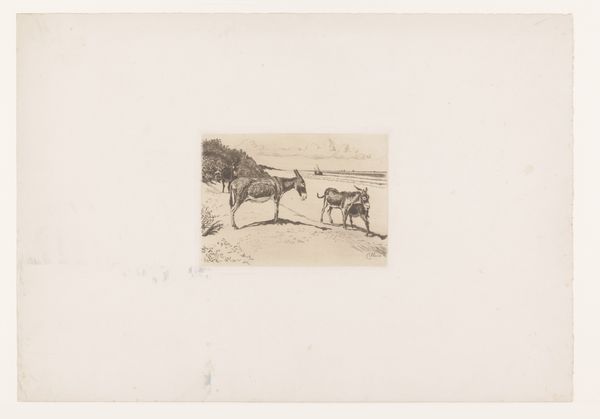
Dimensions: 4 1/2 x 7 5/16 in. (11.43 x 18.57 cm) (plate)10 5/8 x 12 3/4 in. (26.99 x 32.39 cm) (sheet)
Copyright: No Copyright - United States
Curator: Otto Bacher's "View in Venice," created around 1880, offers us a glimpse into theFloating City through the meticulous process of etching. Editor: It has an ethereal quality, doesn’t it? Almost ghostly. The scene feels hazy and dreamlike, definitely more suggestive than explicit. Curator: The choice of etching certainly contributes to that effect. The fine lines created by the acid biting into the metal plate allow for a remarkable level of detail, but also a certain softness. You see how Bacher captures the reflections on the water, the gondolas gently swaying. It is a manufactured print but there is beauty in that technical mastery. Editor: Absolutely. Venice, even then, was heavily mediated. The picturesque views were not simply "found," they were consumed and reproduced as souvenirs, fueling tourism. Did the accessibility of etched prints reinforce or undermine traditional hierarchies of art and class? Was there also a new market opportunity there? Curator: An interesting tension there, certainly. Etchings like this made Venice and "high art" attainable to a broader audience, expanding cultural awareness, even shaping taste... Yet it still operated within certain established power structures, influencing how Venice and Venetians were viewed abroad. Think of the rise in popularity of photography too at that time. It becomes very democratised, even now! Editor: It is compelling to consider. These views of Venice, circulated widely through prints, not only captured a physical location, but also the burgeoning industries built around its representation and material production. Curator: So while seemingly quiet, this little etching reveals a complex story about the art market. I shall ponder on how it may influence some of my collection management choices, Editor: Exactly! And thinking about mass tourism, its rise, is relevant to almost every cultural context, don’t you think? I suppose for the public these art experiences serve as cultural memory markers now too!
Comments
No comments
Be the first to comment and join the conversation on the ultimate creative platform.
